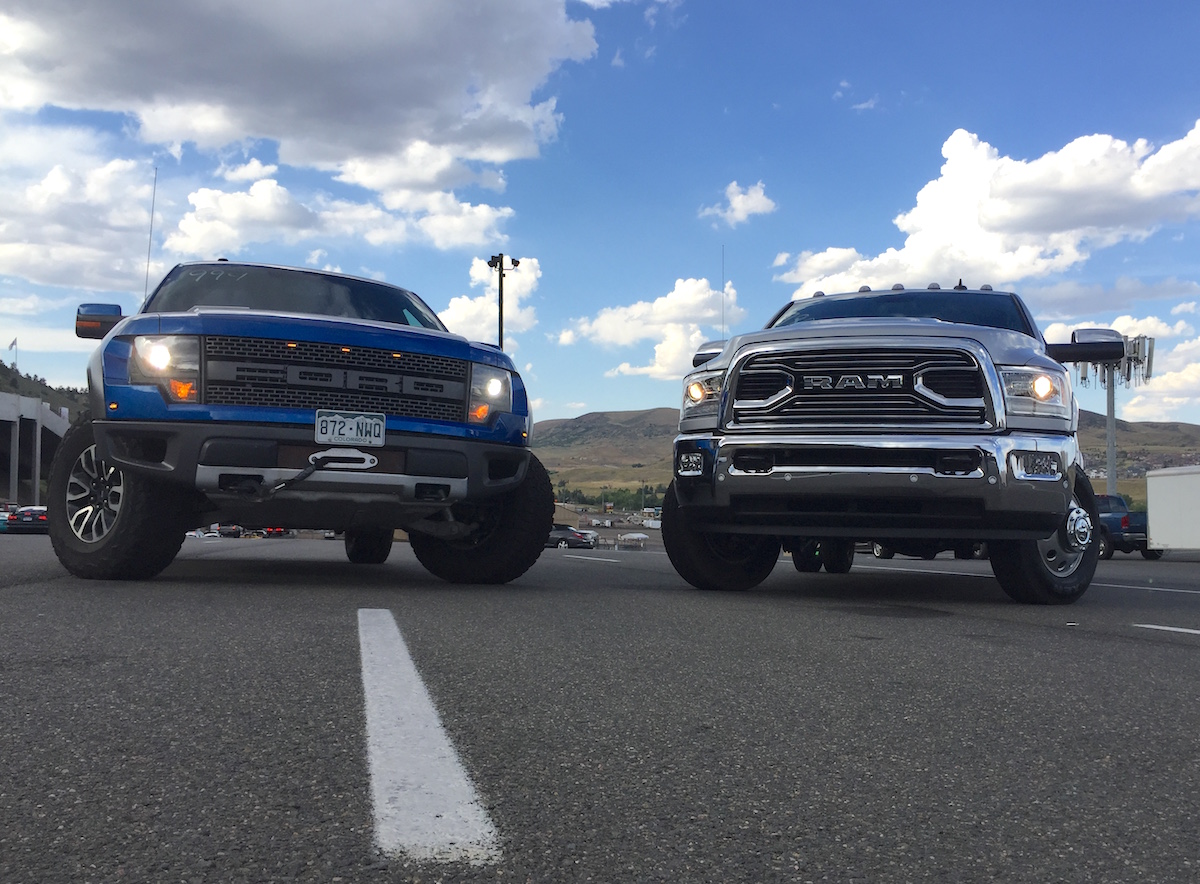
The all-new 2022 Toyota Tundra is finally here in all of its glory! What has Toyota done to be competitive in this very tough American full-size pickup truck segment? They redesigned or updated every component and part. They left no bolt and nut unturned. The new Tundra offers more power, more capability, more technology, and more luxury than ever before. Here are all the details!
Design & Chassis

The truck has an all-new exterior design, a new fully-boxed, steel ladder frame, an aluminum-reinforced composite bed, and a multi-link rear suspension. The 2022 Tundra is offered in either double-cab or full-size crew cab configurations. The bed sizes vary from 5.5 feet to 6.5 and 8.1 feet in length. Since the frame is all new and more rigid, the suspension is fully updated to offer on-road confidence and off-road capability – according to Toyota. All new Tundras will use an independent front suspension and a solid rear axle with coil springs or air suspension in the rear.
The shock absorber and spring options are plentiful. The options are:
- standard shocks
- Bilstein TRD Off-road package shocks
- FOX 2.5 shocks for the TRD Pro (suspension lift)
- Adaptive Variable Suspension (AVS)
- TRD Sport setup (lowered suspension)
We did not have a chance to drive the new Tundra yet. When we do – we will put it through many real-world towing and off-road tests.
Powertrains

The V8 is no longer an option for the new Tundra.
What’s under the hood of this new truck? There is a choice of two twin-turbo gas V6 engines. The base engine is the new i-FORCE 3.5-liter TT V6 that is rated at 389 horsepower and 479 lb-ft of torque. This new twin-turbo engine delivers more horsepower and a lot more torque than the outgoing 5.7-liter V8.
If you are hungry for more power, there is a new i-FORCE MAX twin-turbo V6 that is paired with an electric motor. This Tundra hybrid produces 437 hp @ 5,200 rpm and 583 lb-ft of torque @ 2,400 rpm when measured on regular 87-octane fuel. This combination offers the most torque of any other current half-ton pickup truck. The Tundra hybrid is also more powerful than the Ford F-150 hybrid it will be competing against. (The F-150 Powerboost hybrid offers 430 hp and 570 lb-ft of torque.)
Both of these powertrain choices are paired with a new 10-speed automatic transmission. The transmission is Electronically Controlled AT with intelligence (aka. ECTi). It offers a sequential manual shift mode, uphill/downhill logic, and two tow/haul modes (more on this later).
The base twin-turbo V6 engine is built with an aluminum block. The precise displacement is 3,445 cc with an 85.5 mm cylinder bore and 100 mm piston stroke. The 24-valve dual overhead camshafts are chain-driven and dual VVTi (Variable Valve Timing with intelligence) is employed to get the power and efficiency. There is a water-cooled intercooler system to keep the turbo temperatures in check. Toyota engineers designed the engine block, pistons, valves, and exhaust manifolds to optimize cooling and efficiency. They had reliability and performance in mind. We will have to put these new Tundra engines through a series of real-world tests to find out what its really made of.
The I-FORCE MAX hybrid system uses the same twin-turbo V6 engine but adds an electric motor/generator with a clutch that is sandwiched between the engine and the transmission. This allows for low-speed electric-only driving, power assist during hard accelerations or while towing, and energy regeneration. The hybrid uses a 288V sealed Nickel-metal Hydride (Ni-MH) battery that is packaged under the rear passenger seats. The battery has a total capacity of 1.87 kWh, and it does take away the entire under rear seat storage space.
Fuel efficiency estimates have not yet been announced.
Composite Bed, Payload, and Towing

The 2022 Tundra will offer three different bed lengths. All of these beds are constructed of the latest Sheet Molded Compound (SMC) composite material. Toyota says it resists dents, dings, and does not rust like a traditional steel bed might. This is the next generation of composite that is currently used for Toyota Tacoma beds.
The tailgate was made lighter weight. It weighs about 20% less than before. Every trim of the new Tundra has a tailgate release button on the key fob. Some trims of the new Tundra
The new chassis, lightweight bed components, the engine, and the suspension allow for a maximum towing capacity of 12,000 lbs and a maximum payload of 1,940 lbs. The new Tundra offers not one but two Tow/Haul modes. The standard Tow/Haul mode is made for lighter loads and smaller trailers. Tow/Haul+ mode further modifies the throttle response for hauling or towing heavier loads. On the hybrid-equipped trucks, the Tow/Haul mode also disables the engine auto start/stop feature.
There is more. The advanced towing package also includes a retractable front chin spoiler that improves the overall aerodynamic profile and is meant to provide slightly better efficiency while towing a trailer.
Roll Down Window, but No Powerful Generator
As we already knew, the 2022 Tundra keeps its unique feature – the full-length roll-down back window on crew cab models. The shorter double-cab trucks get a smaller more traditional sliding rear window. It was a big challenge to include the full-length roll-down rear window on crew cab trucks. Toyota says they paid special attention to the aerodynamics of the cab roof and the trailing edge of the cab to reduce backdraft and help avoid dust or other debris from being blown back inside the cab when the window is open.
Since the 2022 Tundra is offering a sophisticated gas/hybrid powertrain, you may expect it to also offer a high-powered inverter/generator feature – similar to the F-150 PowerBoost hybrid. The maximum 120 Volt electric outlet output is currently set at 400 Watt. Ford offers a built-in inverter system with an output between 2,000 to 7,200 Watt. When asked, Toyota says that the 400 Watt inverter system is sufficient for what their customers are doing. They are looking at potential solutions for the future that are affordable, reliable, and practical.
Huge Screen & New Interior
Since this is an all-new truck, it has an all-new and redesigned interior. All of the trucks we had access to show the new central 14-inch infotainment system. Ram and Ford went to 12-inch screens recently. GM (Chevrolet) is upgrading to a 13.4-inch screen. Now Toyota is screen real estate to 14 inches in a horizontal / landscape orientation. The truck infotainment is powered by the company’s latest software that first made its debut in the 2022 Lexus NX. The 2022 Tundra is the first Toyota vehicle to switch to the latest operating system and the human-machine interface.
This is a giant leap in technology and ease of use over the previous generation of the Tundra. The large screen offers a lot of real estate for clear graphics, most major functions are within one or two clicks. It’s very easy to switch between navigation, phone integration, and music/entertainment. The climate controls are a separate row of hard buttons and controls under the screen. There is also a large volume control knob. On top of all of this, there is a natural language voice control system as well. You can ask the truck about a weather report, current fuel efficiency, change a music channel, and much more. Wireless Apple Car Play and Android Auto integration are also available.
Available Trims
The new 2022 Tundra will be available in the following trim levels: SR, SR5, Limited, Platinum, TRD Pro, and 1794 Edition. While all trim levels will receive the all-new chassis and multi-link rear suspension, not all trims will offer the big infotainment screen or digital gauges. However, all get their unique exterior trim and interior materials and treatment.
Pricing has not yet been announced, but Toyota says the all-new 2022 Tundra will be produced and go on sale in 2021.
Suspension & TRD Pro Off-Road Specs
The new Tundra rides on a new multi-link rear coil-sprung suspension. The leaf springs in the previous generation of the truck are gone. Toyota says the newest suspension design improves ride comfort, straight-line stability, handling, and towing capability. For example, the towing ability was increased by 17.6% to a total of 12,000 lbs. The payload capacity is improved by 11% to 1,940 lbs.
How does this new Tundra suspension compare against the competition? Ram trucks have used a five-link rear coil-spring suspension for years. The new 3rd-generation 2021 Ford Raptor has switched to rear coil springs. However, the majority of Ford F-150, Chevy Silverado, GMC Sierra, and Nissan Titan pickup truck still use rear leaf springs.
The front uses a double-wishbone independent A-arm suspension setup. Certain front suspension components were enlarged or shifted around. The latest components and geometry is said to improve high-speed stability and reduce body roll in corners.
The new Tundra will use twin-tube shocks as standard. TRD Off-road trucks use Bilstein monotone shocks for improved damping. The most off-road-worthy TRD Pro version of the Tundra gets 2.5-inch diameter FOX internal bypass shocks. The TRD Pro truck has a 1.1-inch front suspension lift. Front and rear FOX shocks have piggy-back reservoirs and FOX’s latest PTFE low friction fluid for improving on-road and off-road performance.

But wait there is more. The multi-link rear suspension design allows Toyota to offer an optional air suspension to the rear of the truck. Several height settings are offered: Low, Normal, and High. The High air suspension setting is meant to be used in slower off-road situations. The suspension automatically returns to Normal mode when the speed exceeds 18 MPH. The Low height is meant for easier loading or unloading. The Low setting automatically returns to Normal mode at a speed over 8 MPH.
But wait there is more still. There is also an optional Adaptive Variable Suspension (AVS) system that uses solenoid-equipped shocks for continuously variable damping that is dependent on conditions. This idea is similar to the CDC in the GMC trucks and the CCD suspension system in the new Ford F-150 trucks.
The truck was designed in North America by the Toyota team at the Calty Design Research in California and Michigan. Engineering research and development of the truck took place in Michigan, Arizona, and California according to Toyota.


































![Which is More Reliable: 3.5L EcoBoost or 5.0L V8? [Reader Question] Second-generation 3.5-liter EcoBoost engine](https://tfltruck.com/wp-content/uploads/2016/05/Second-generation-35-liter-EcoBoost-engine.jpg)
![Which Silverado Engine to Get: 5.3L or 6.2L V8? [Ask TFLTruck] 2016 chevy silverado](https://tfltruck.com/wp-content/uploads/2015/10/2016-chevy-silverado-grille.jpg)
